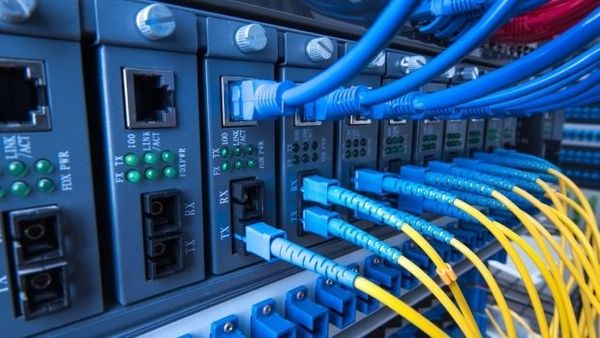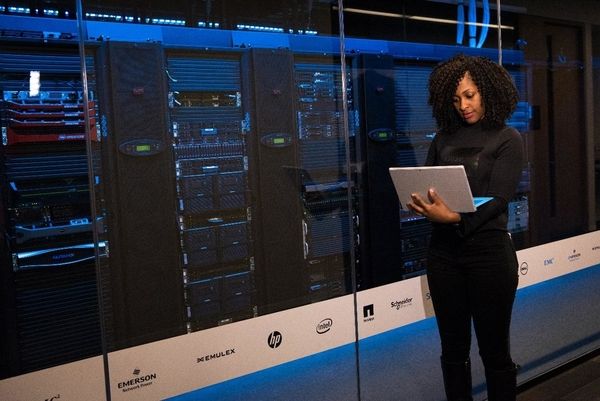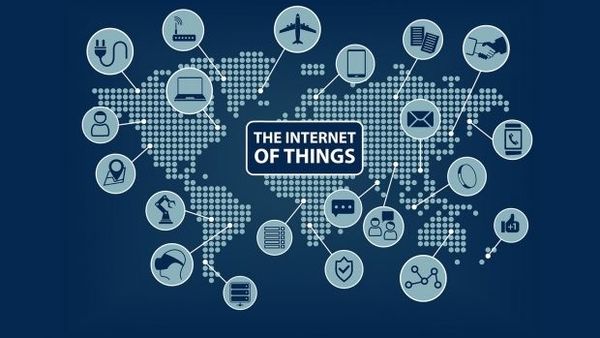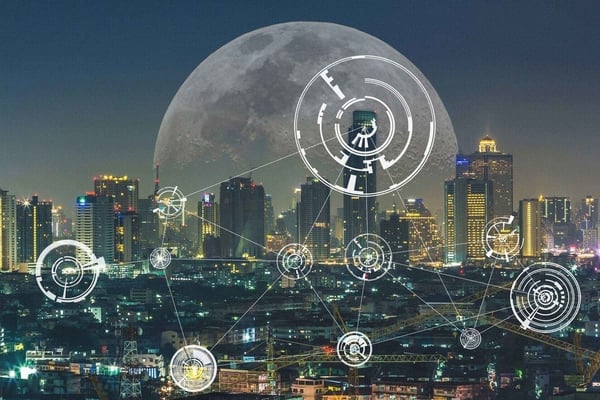
Application Server vs. Web Server: Differences and Similarities
July 24, 2019
Deep Learning for Building Smart Data Centers
July 31, 2019Less than 50 years ago, computers were considered science fiction. Today, most of us are carrying what would be considered a supercomputer in our pockets. It may be safe to say; shortly, computers communicating with each other, people, and even the environment will surround us. The future of technology will be ambient computing.
This vision can be referred to in many different ways—ambient computing, ambient intelligence, ubiquitous computing, pervasive computing, and calm computing. All of these ideas refer to a simple concept. It is the idea that we don’t need to interact directly with any devices. As computing becomes more pervasive, it vanishes into the environment around us. It won’t be something that interrupts our everyday tasks but instead helps us throughout our day unassumingly. It truly becomes a part of the environment surrounding us. In the future world of ambient computing, we have the benefits of information and all computing capabilities, but we don’t need to interact with any device directly with a screen, keyboard or mouse.
Imagine a world where it feels like computers have vanished, but we are still benefiting from computing on a different level. This type of computing will not be interfering with our lives but complementing and benefiting our lives in different ways. In the future, computers will no longer be an object but will fill the surroundings without being obtrusive.

Photo source: digitalistmag
What Is Ambient Computing?
Traditional computing platforms have always gone under one of the following descriptions: desktops, laptops, handhelds, and now wearables. Ambient computing goes further than any of these things. Ambient computing is where the physical device is not what’s most important. One of the definitions of the word ambient is “relating to the immediate surroundings of something.” Taking this into account, ambient computing can be all around us without us knowing anything about the device itself.
An old technology that can be considered ambient is a motion sensor. When you visit a grocery store, and the doors open for you without any effort. This isn’t computing technology, but it is ambient. Smart speakers like the Amazon Echo, Google Home, and the Apple Homepod are ambient computing devices. There is a major difference between using Siri on your iPhone and using Alexa in the Echo. The difference is the ambient nature of how you are interacting with the device. For Siri, you are picking up your device and speaking to it. To use Alexa, you are talking to the room.
Smart thermostats are another use of ambient computing. Smart thermostats use artificial intelligence to learn what temperature you like in your home throughout the day and will set it accordingly. After some time, you won’t have to set the thermostat at all. Ambient computing will allow you to not think about setting it.

Photo Source: computerworld
Ambient Computing and The Internet of Things
The Internet of Things (IoT) and ambient computing are directly related. IoT describes the smart home and how the devices connect. Ambient computing is what happens when these devices are connected, and more so, what they learn from each other.
An example of this, again, is a smart thermostat, which instead of us controlling it directly, today we can control it from our phones. With ambient computing, these devices can think for themselves and predict the temperature we are most comfortable during certain times of the day. Ambient computing will allow your entire house and office to run itself. And it will predict it based on outside weather changes throughout the seasons, our schedule, and maybe even our mood.
Ambient computing can also be used in the car for many different purposes. Maybe you’ve had a long stressful day at work, or you just finished a workout, in the future, your watch will be able to tell your mood and play a specific music playlist to help you relax. Your car will also sense the environment and find you a faster and less stressful way home.
This technology could also do the same with your home appliances. Order groceries that you are running low on, give you new recipes with the ingredients you have in your refrigerator and pantry, etc.
More than ordering groceries, IoT is revolutionizing health care, and with the help of ambient computing in the future, it will be even more prevalent. The idea of ambient computing is to help aid in everyday life.

Photo Source: itpro
Characteristics of Ambient Computing
Certain characteristics embody ambient computing. Not every product will have all of these characteristics, but it can represent a template of the concept of ambient computing.
The first one is “invisible.” Some of the most significant technological advancements aren’t noticed although they are still happening. Companies make it so that the focus isn’t quite on the progression of the technology; the focus is on the user experience. One example of this could be found in cameras. There was a time where just a few people owned cameras. Now, most everyone owns them since they are packaged with all smart devices. The same can be said about computers.

Photo Source: medium
Another example is data centers. Data centers evolved and have become more technology-driven throughout the years, but almost completely invisible to most of its consumers. We are all creating and consuming massive amounts of data (which is stored in these data centers), yet we don’t notice them in our everyday lives.
Another Ambient computing is “embedded.” Technology is embedded in everyday products. An example of this could be a smartwatch like the Apple Watch or the Samsung Galaxy Watch. A normal product like the watch can be embedded with smart technology and is now as frequently seen as a classic timepiece. Another example can be a smart thermostat. Technology advancements are being integrated into common devices, making them more convenient and maybe even better in some regards. The reason why this is considered ambient is that it isn’t blatantly noticeable.
Another characteristic of ambient computing is it should be familiar. Controlling this technology should simple and stress-free. It should be easy enough for most people to use. It should also be discreet. It should be easily accessible when you need it, but not obtrusive when you don’t. Smartphones, smartwatches, and smart thermostats are still a good example of this. When you need that pocket computer in your jeans, it’s readily available to you.
Ambient computing should also be inclusive. Certain technology products tend to have a limited user base: limited those who can understand how to use it and those who can afford it. Ambient computing should be inclusive and easy to use for most people.
Lastly, ambient computing, in certain aspects, should be practice constraint. In the technology industry, there is pressure to create and promote the most groundbreaking technology. But there is an argument that having a conservative approach to how innovations are introduced to the public can lead to better adoption rates. If a new technology seems familiar in one way or another to the public, potential users may be less afraid of giving it a shot.

Conclusion
Ambient computing, ambient intelligence, ubiquitous computing, pervasive computing, or calm computing (whatever you choose to call it) is about guided evolution to aid in our everyday lives. This will include everything from hardware, software, user experience, and human-machine interaction. We have seen innovations hinting at a future full of this kind of technology, but in the future, we won’t be bombarded and bothered by personal devices. Instead, ambient computing will make all the technology fade and blend into the background where we don’t notice it working. It will be functioning to help our everyday lives calmly and unobtrusively. Ambient computing isn’t just the future of smart homes, but it will bring a new age to the smart world. Ambient computing is the future of technology, and it’s an exciting one at that.

